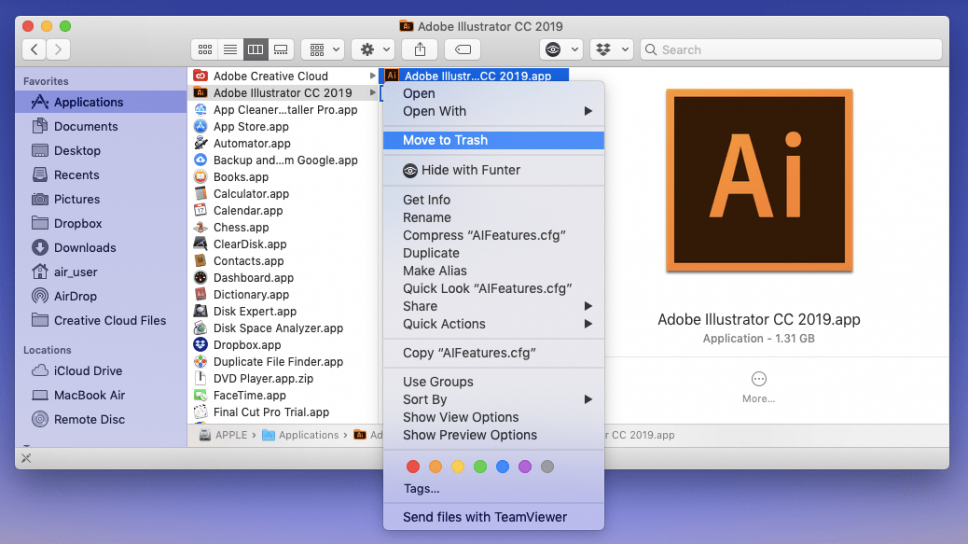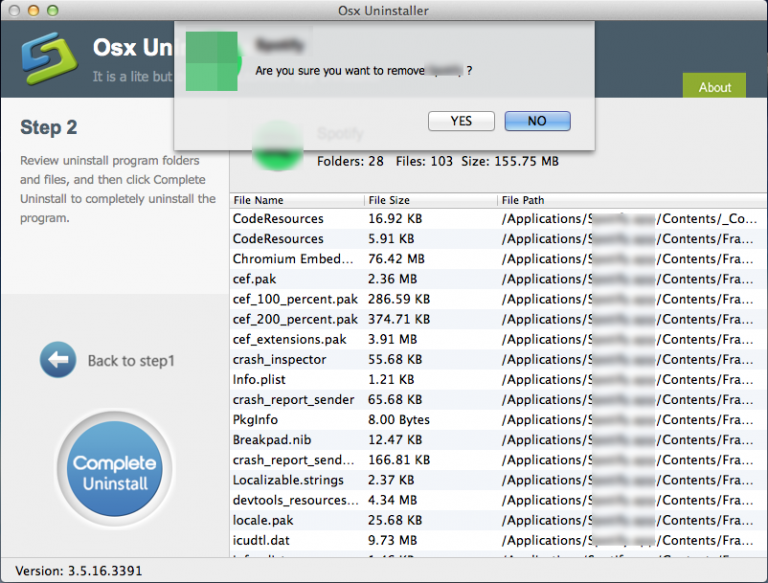

- #UNINSTALL ADOBE SCOUT CC MAC PASSWORD#
- #UNINSTALL ADOBE SCOUT CC MAC DOWNLOAD#
- #UNINSTALL ADOBE SCOUT CC MAC FREE#
#UNINSTALL ADOBE SCOUT CC MAC DOWNLOAD#
Download the Chef Workstation for Enterprise Linux 6 – as of writing, that’s chefdk-0.4.0-1.x86_64.rpm.Follow instructions for Installing Chef Workstation: This can be on the same computer, and in my case is in the same VM – the Server and Workstation are the same virtual machine. Now, set up the Chef Workstation where you can get things done. If you create an organization called “test” you can name the private key “test.pem” and use that wherever you see “ssh.pem” in these instructions.

This “ssh.pem” file is the private key for my organization, with short name “ssh”. Sudo chef-server-ctl org-create ssh SacredSF -association_user nick -filename /etc/chef-server/ssh.pem
#UNINSTALL ADOBE SCOUT CC MAC PASSWORD#
Sudo chef-server-ctl user-create -filename /etc/chef-server/nick.pem nick Nick McSpadden password
If the hostname for the machine does not have an FQDN, that needs to be done first:.  Download the Chef server for Enterprise Linux 6 – as of writing, that’s chef-server-core-12.0.86_64.rpm. In these instructions, “ssh” refers to the short name for my organization “Schools of the Sacred Heart SF”.įollow the instructions for Installing Chef Server: The client configuration is done on an OS X Yosemite 10.10.2 VM. The server / workstation setup was all done in a CentOS 6.6 VM. I find that Chef’s documentation is a bit ambiguous, so I’ve recreated it here to show the steps I used to get something working. As I test out various configuration management tools and methods, I wanted to try my hands at Chef to see what the process would be like. If all of it checks out and the web page loads, your SSL certs are working and your Chef server now uses trusted SSL!Ĭhef is a configuration management tool, similar in concept to Puppet. You should also verify in a web browser as well. You can verify your server’s SSL connection: Use cat to check the contents of the certs to make sure there are no typos, there is space between each BEGIN CERTIFICATE and END CERTIFICATE line (there should be 3 total), and that you copied the correct files. If you have a problem here, or nginx takes too long to start up (or fails to start up), it’s almost certainly because of a problem with the certificates. Finally, reconfigure the server with the new SSL certs:. IMPORTANT! Your server’s hostname must match the server in your certificate! Verify:. You can leave them out and this will work just fine. Note: the last two parts, ssl_ciphers and ssl_protocols are optional – they just harden the SSL connection against weaker forms of SSL. Add the certificate and key paths to /etc/opscode/chef-server.rb:. Copy the key and certificate into the trusted store for CentOS 6:. Copy Complete/ and .key to your Chef server (via scp, or whatever mechanism works for you – since I did this in VMWare, I just used the drag-n-drop capability). (Note that I put this into a separate “Complete” folder to keep track of which one to copy) Concatenate all the certs together into one.
Download the Chef server for Enterprise Linux 6 – as of writing, that’s chef-server-core-12.0.86_64.rpm. In these instructions, “ssh” refers to the short name for my organization “Schools of the Sacred Heart SF”.įollow the instructions for Installing Chef Server: The client configuration is done on an OS X Yosemite 10.10.2 VM. The server / workstation setup was all done in a CentOS 6.6 VM. I find that Chef’s documentation is a bit ambiguous, so I’ve recreated it here to show the steps I used to get something working. As I test out various configuration management tools and methods, I wanted to try my hands at Chef to see what the process would be like. If all of it checks out and the web page loads, your SSL certs are working and your Chef server now uses trusted SSL!Ĭhef is a configuration management tool, similar in concept to Puppet. You should also verify in a web browser as well. You can verify your server’s SSL connection: Use cat to check the contents of the certs to make sure there are no typos, there is space between each BEGIN CERTIFICATE and END CERTIFICATE line (there should be 3 total), and that you copied the correct files. If you have a problem here, or nginx takes too long to start up (or fails to start up), it’s almost certainly because of a problem with the certificates. Finally, reconfigure the server with the new SSL certs:. IMPORTANT! Your server’s hostname must match the server in your certificate! Verify:. You can leave them out and this will work just fine. Note: the last two parts, ssl_ciphers and ssl_protocols are optional – they just harden the SSL connection against weaker forms of SSL. Add the certificate and key paths to /etc/opscode/chef-server.rb:. Copy the key and certificate into the trusted store for CentOS 6:. Copy Complete/ and .key to your Chef server (via scp, or whatever mechanism works for you – since I did this in VMWare, I just used the drag-n-drop capability). (Note that I put this into a separate “Complete” folder to keep track of which one to copy) Concatenate all the certs together into one. 
Openssl x509 -in chef_sacredsf_org_startssl.crt -out -outform PEM Openssl rsa -in chef_ssl_encrypted.key -out .key With all of these downloaded, here are the steps for setting up Chef to use these SSL certificates:
The encrypted private key: chef_ssl_encrypted.key. The actual SSL certificate: chef_sacredsf_org_startssl.crt. Once you go through the StartSSL certificate wizard, you’ll be given four things (not all filenames will be accurate, I’ve renamed them for clarity): As long as the server knows its own hostname, you can do this all on one VM. NOTE: you do not need to have this server exist in DNS. In this post, all of my examples will be for “”. As in the previous article, this is with Chef Server 12 running on CentOS 6.6 in VMWare. I chose StartSSL because it’s free, and the root CAs are already in the default OS X and iOS trust stores. #UNINSTALL ADOBE SCOUT CC MAC FREE#
For this example, I got a free one from StartSSL. Thus, I highly recommend configuring the Chef server to run with a real, trusted SSL certificate. This is fine for small testing purposes, but this becomes a significant problem in production, especially when using other Ruby tools or modules that require SSL verification. Previously, I wrote on setting up Chef Server 12.īy default, Chef Server uses a self-signed certificate.








 0 kommentar(er)
0 kommentar(er)
